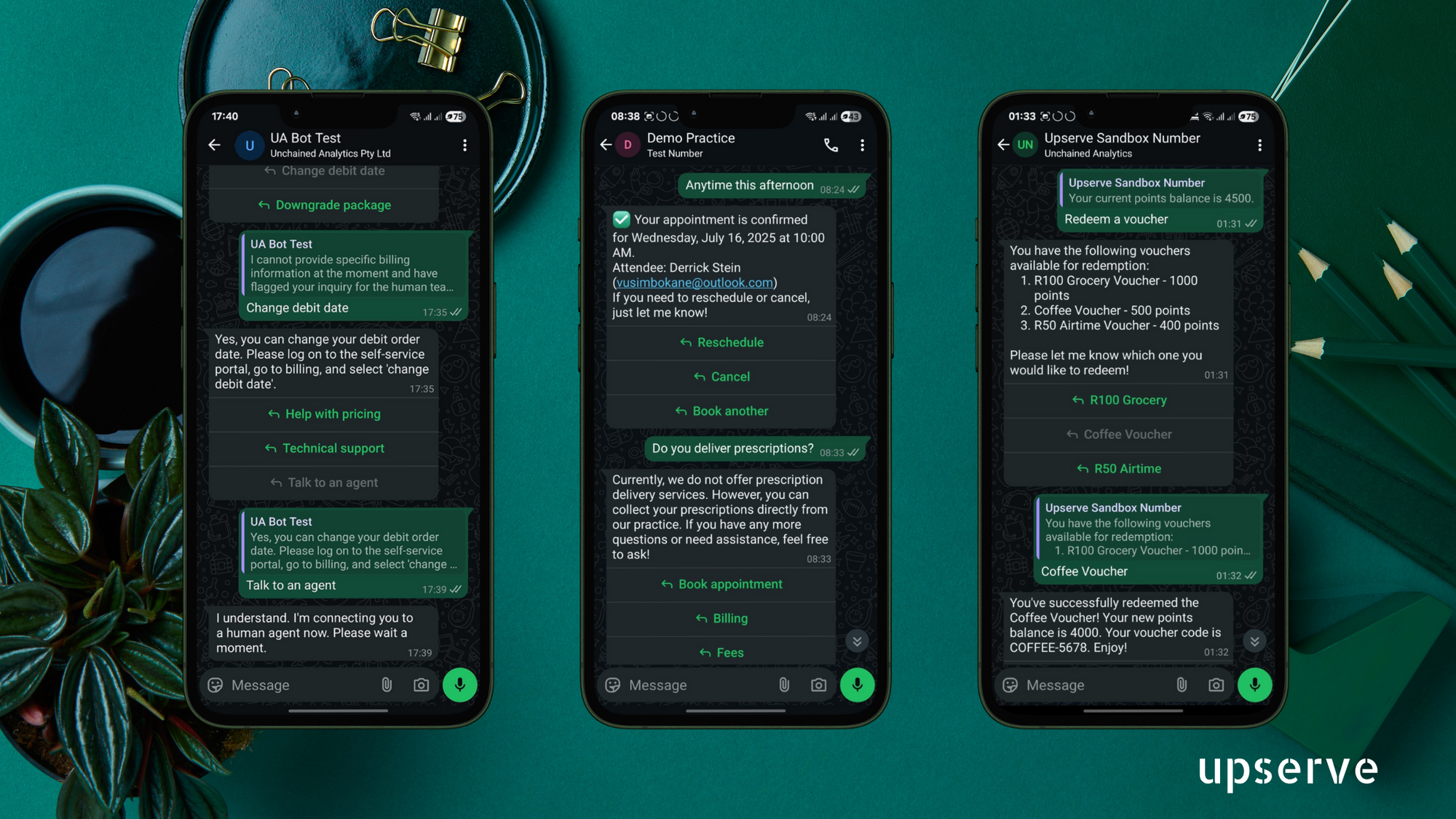If you’re a CX leader or operations manager, chances are your WhatsApp support isn’t delivering the results you hoped for. Customers complain about slow responses, agents feel overwhelmed, and the “smart” chatbot you implemented frustrates more people than it helps.
The truth? Most WhatsApp setups are little more than glorified FAQ scripts. They don’t reason through customer queries, they don’t hand off smoothly to humans, and they can’t perform the tasks that actually matter.
But it doesn’t have to be that way. With the right approach, WhatsApp can go from being a cost center to your most valuable customer engagement channel.
Why WhatsApp Support Often Fails
1. Bots that react, not reason
Most WhatsApp bots are logic-first - “if this, then that” flows that only work if the customer asks the exact questions you anticipated. Real customers don’t follow scripts: they use slang, combine requests, or skip expected keywords.
The impact:
- High failure rates: customers get stuck and escalate to humans.
- Longer handling times: agents have to retrace the steps the bot already took.
- Lost revenue: customers abandon purchases when the experience is frustrating.
2. Broken human handovers
Even when escalation is supported, most systems fail at passing structured context. An agent may get the chat log, but not the important details, like the customer’s intent, order number, or what steps were already tried. The result? Customers repeat themselves, agents waste time, and satisfaction plummets.
The impact:
- Higher costs per ticket.
- Lower CSAT and NPS.
- Agent burnout from repetitive, preventable work.
3. No ability to take real action
Answering FAQs is helpful, but not enough. Customers expect automation to do things: reschedule appointments, issue vouchers, process refunds, update orders. Traditional bots can’t call APIs or complete multi-step workflows, leaving your staff to pick up the slack.
The impact:
- Limited self-service containment.
- Escalation to phone or email (higher cost channels).
- Missed opportunities for upsell, cross-sell, and retention.
The Cost of Getting It Wrong
Poor WhatsApp automation doesn’t just annoy customers, it directly affects your bottom line:
- Wasted agent time re-answering questions that bots should resolve.
- High operational costs from broken handovers and duplicated work.
- Lost revenue when frustrated customers abandon carts, cancel services, or switch to competitors.
For industries with high chat volumes, like clinics, eCommerce, ISPs, and utilities, these inefficiencies compound fast.
What Great WhatsApp Support Looks Like
Modern WhatsApp automation is not about decision trees. It’s about AI-powered agents that behave like an extension of your team. A system that:
- Understands context using your knowledge base and policies, not just keywords.
- Connects to your tools (CRM, calendars, loyalty systems, payment gateways).
- Performs real actions on behalf of customers, bookings, refunds, troubleshooting.
- Transfers seamlessly to humans with full context intact.
- Improves continuously by learning from conversations and outcomes.
Put simply, the bot should feel like a teammate, not a gatekeeper.
From Chatbot to AI Agent
The shift isn’t about ripping everything out, it’s about upgrading your mindset and tools. Think of WhatsApp not as a chatbot channel, but as a digital teammate that can understand, act, and escalate just like a member of your support team.
Platforms like upserve.tech are designed with this philosophy:
- AI agents that leverage agentic retrieval, going beyond naive RAG, to fetch from your knowledge base with smarter search, hybrid retrieval and dynamic context reasoning so responses are far more accurate and relevant.
- API and workflow integrations that let agents take real actions on behalf of your customers (bookings, refunds, orders).
- Smart, structured handovers that give agents the context they need to resolve issues quickly without making customers repeat themselves.
- Built-in observability, every decision, tool call, and outcome is logged for quality and compliance.
The result: faster resolutions, lower costs, higher satisfaction, and a support channel that strengthens conversion and retention.
Where This Approach Wins Fast
- Medical practices: automated booking, pre-appointment triage, follow-up surveys.
- ISPs & utilities: customer onboarding, ticket logging, technician scheduling.
- E-commerce & product support: product discovery, guided troubleshooting, automated returns, loyalty redemptions.
These are all scenarios where automation isn’t just answering, it’s acting.
A Practical Next Step
If your WhatsApp setup feels stuck, don’t overcomplicate it. Start with a focused pilot:
- Choose one high-volume, high-cost flow (like product returns or appointment booking).
- Baseline your KPIs (containment, AHT, CSAT).
- Integrate knowledge and systems (FAQs, order APIs, calendars).
- Deploy an AI agent and monitor results over 60–90 days.
You can use platforms like upserve.tech for your pilot. Most businesses see a 30–60% increase in self-service on targeted flows, 20–40% reduction in handling times, and a measurable boost in CSAT.
Conclusion
Your WhatsApp channel shouldn’t be a frustration point, it should be a growth driver. The gap between today’s brittle bots and modern AI agents is wide, but bridging it is entirely practical.
Start small. Pilot one use case. Measure the impact. With the right AI-driven design, WhatsApp can become your most powerful channel for customer engagement.
Ready to see what modern WhatsApp automation looks like? Book a demo with upserve.tech and discover how AI-powered agents can transform your customer support.




